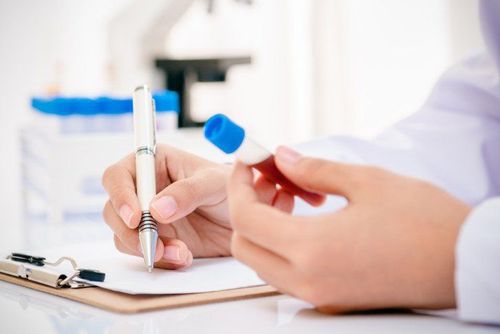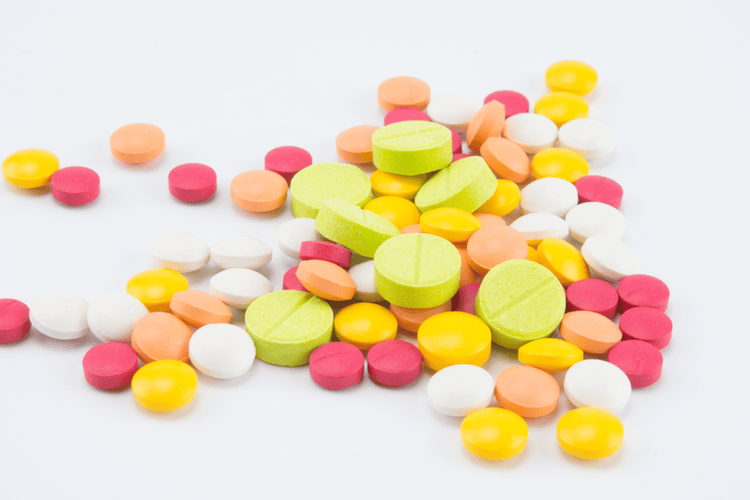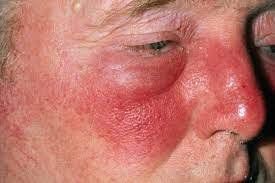This is an automatically translated article.
erysipelas is an infection that occurs in the skin and subcutaneous tissues of the patient. Anyone can get this disease, especially infants and the elderly. The diagnosis is mainly based on clinical signs, patients with erysipelas need to be treated with antibiotics at an early stage.1. How to diagnose erysipelas?
1.1 Definitive diagnosis The definitive diagnosis of erysipelas is mainly based on clinical manifestations and some paraclinical tests:Clinical symptoms:
The patient has a sudden high fever, from 39- 40 degrees Celsius, accompanied by chills, headache, nausea and vomiting... In subjects with poor resistance, such as infants, the elderly, people with chronic diseases or weakened immune systems Epidemics often show more severe illness such as high fever, lethargy, even coma. Nodes related to the site of injury on the skin are swollen and painful. Such as facial lesions, the angular ganglia are prominent...Basic lesions on the skin: The skin lesions are higher than the normal skin, have a clear boundary separating the healthy skin, on the surface of the location where the lesion is located. bright red or even colored and the lesions appear to resemble tangerine peels, with central vesicles or sometimes necrotic ulcers. At first, a small red spot appeared, then gradually spread to the periphery around the plaque, hard... At the site of the lesion on the skin, there was natural pain, increasing when palpating. Common location: In infants, it is often found on the abdomen, in older children, it is often found on the face, ears, and scalp, and in adults, erysipelas are more common on the legs and hands than on the face, less often in the ears. Subclinical signs:
Blood count: The white blood cell count increases, the neutrophil count increases. Elevated erythrocyte sedimentation rate. Occurrence of albuminuria if complications cause damage to the body. Culture of fluid and pus at the lesion site is valuable for identifying pathogenic bacteria. Blood cultures: Of little value. The case of suspected bacteremia was positive.

Nếu bệnh nhân bị viêm quầng, số lượng bạch cầu và bạch cầu trung tính sẽ tăng trong xét nghiệm công thức máu
2. Treatment of erysipelas
Treatment of erysipelas is mainly medical measures such as local care, symptomatic treatment and cause treatment.2.1 Local care measures The patient should be admitted to the hospital for inpatient treatment. Lying in bed, if the limb is injured, it is necessary to immobilize the injured limb to reduce pain, swelling and inflammation. Apply wet gauze continuously to the skin, should be applied to lesions with exudative abrasions or skin ulcers. Replenish nutrients for the body, drink enough water. 2.2 Symptomatic treatment Patients with fever should reduce fever with drugs such as paracetamol at a dose of 10-15mg/kg body weight, taken every 4-6 hours if fever is present. Or you can use ibuprofen to relieve pain and reduce fever. Pain relief: In addition to physical measures such as compressing and elevating the limb, non-steroidal anti-inflammatory drugs can be applied topically or taken orally. 2.3 Treat the cause This is a bacterial infection, so it is necessary to treat erysipelas with antibiotics. The rule is that antibiotics should be taken in the first place to avoid complications.
Choice of antibiotic: The antibiotic of first choice is penicillin, if the patient is allergic to penicillin or other drugs in the betalactam group, then use a macrolide antibiotic such as erythromycin or azithromycin. If the bacteria is resistant to penicillin antibiotics, use methicillin antibiotics such as oxacillin, dicloxacillin, nafcillin.

Đây là bệnh nhiễm khuẩn nên cần điều trị bệnh viêm quầng bằng kháng sinh
Adults:
Penicillin G: 0.6-1.2 million units intramuscularly twice a day, injected for 10 days. Penicillin VK: 250-500 mg orally 4 times a day, orally for 10-14 days. Children:
Penicillin G: Under 30kg 300,000 units/day, over 30kg use the same dose as adults. Intramuscular Penicillin VK: Under 12 years old 25-50mg/kg/day orally divided 3-4 times. Over 12 years old oral dose as adults. Antibiotics erythromycin
Adults: 250mg-500mg x 4 times/day. Drink from 7-14 days. Children: The usual dose for children is from 30-5mg/kg/day orally divided into several times. For children under 2 years old, 500mg/day divided into 4 times. Children from 2-8 years old use 1g / day divided into 4 times. Dicloxacillin (dynapen) antibiotic: Used to treat cases where the cause of the disease is penicillin-resistant staphylococci.
Adults: 125-500mg orally 4 times / day, orally for 10 days. Children: Under 40 kg dose is 12.5 mg/kg/day orally every 6 hours. Over 40kg oral dose as adults.
3. Prognosis of erysipelas
With treatment, the signs and symptoms of erysipelas may go away completely in a few weeks. Most cases do not leave scars because the lesions in this disease are superficial lesions that do not reach the dermis. In some cases of relapse, long-term prophylactic treatment with penicillin is indicated to prevent recurrent infections and to prevent complications.If untreated or treated late, the patient is at risk of complications such as:
Formation of an abscess at the site of a skin lesion Formation of a blood clot Necrosis Sepsis, if there are complications This has a mortality rate of up to 50% in children. Endocarditis Meningitis Joint and Bone Infection The diagnosis of erysipelas is not too complicated mainly based on clinical signs alone. As soon as the diagnosis, it is necessary to start antibiotic treatment early, helping to reduce the risk of dangerous complications. The disease is especially dangerous for people with poor health, so if there are signs of suspicion, it should be examined and treated early.
Vinmec International General Hospital with a system of modern facilities, medical equipment and a team of experts and doctors with many years of experience in medical examination and treatment, patients can rest assured to visit. examination and treatment of erysipelas at the Hospital.
Please dial HOTLINE for more information or register for an appointment HERE. Download MyVinmec app to make appointments faster and to manage your bookings easily.
SEE MOREPackage of examination and consultation for treatment of atopic dermatitis Dermatitis – Method of prevention and treatment Children with atopic dermatitis: How to properly care?








